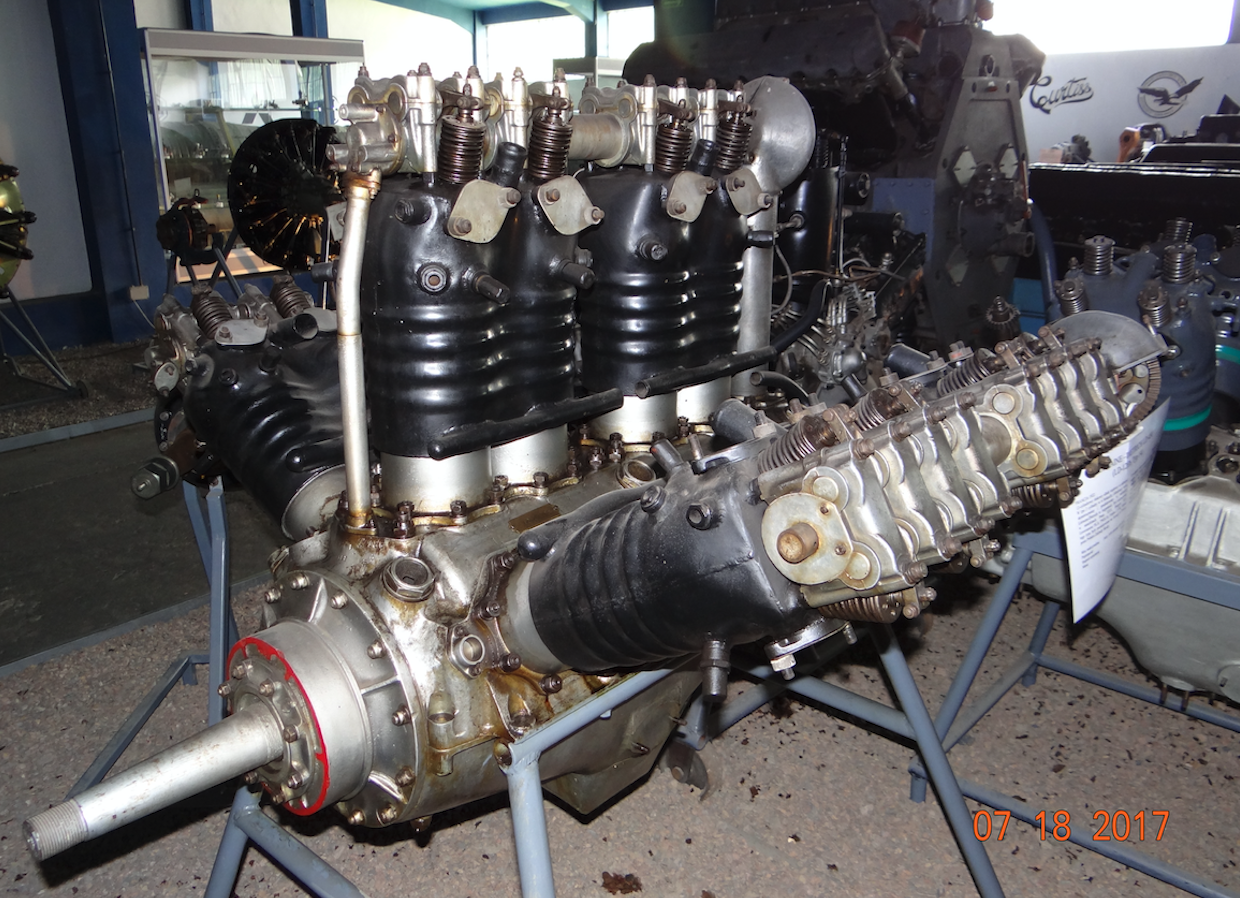Kraków 2013-03-14
Outline of the history of navigation. Fokker F.VII and Other Aircraft. 1924
Farman F-70.
Taking advantage of the new market for civilian aircraft, and influenced by suggestions from carriers, Société des Avions H&M Farman, based on the F-50 aircraft, developed the Farman F-70 passenger aircraft. The aircraft first flew in 1920. Around 20 aircraft of this type were produced between 1921 and 1925.
The Farman F-70 was a reduced Farman Goliath aircraft, powered by a single engine and carrying 4 passengers. Wingspan 14.90 m, length 10.10 m, height 3.43, wing area 54.00 m2, empty weight 1,330 kg, max weight 2,050 kg, one Renault 12Fe engine, with 300 hp, max speed 185 km/h, range 400 km. The Farman F-70 aircraft had exceptionally good handling characteristics. The pilot sat in an open cockpit, with only a windscreen in front of him. Passengers had access to a closed cabin.
Farman F-70 aircraft were used by French airlines for flights to Africa; Casablanca in Morocco, Dakar in Senegal, Biskra in Algeria. They also flew on European routes; Paris-Brussels-Amsterdam. Two Farman F-70 aircraft also flew on the routes of the French company CIDNA, which at that time also reached Warsaw. The aircraft flew via; Switzerland, Austria, Czechoslovakia to Poland.
In 1925, one of the world’s first airlines was established in Poznań. The company used Ławica Airport and was called Aero Komunikacja Powietrzna S.A. The company bought 5 Farman F-70 aircraft (2 used and 3 new). The used aircraft arrived in Poznań on May 19, 1925. On May 21, 1925, they performed their first propaganda flights over Poznań. The first commercial flight was performed on May 23, 1925, on the Poznań–Warsaw route. Subsequent flights were also performed with a stopover in Łódź (Poznań-Łódź-Warsaw route and back). In October 1925, 3 new planes packed in crates arrived from France. By 1928, they had transported about 3,200 passengers. In 1928, the company and its equipment were taken over by PLL LOT, which, however, did not accept the Farman F-70 planes due to their significant wear and tear.
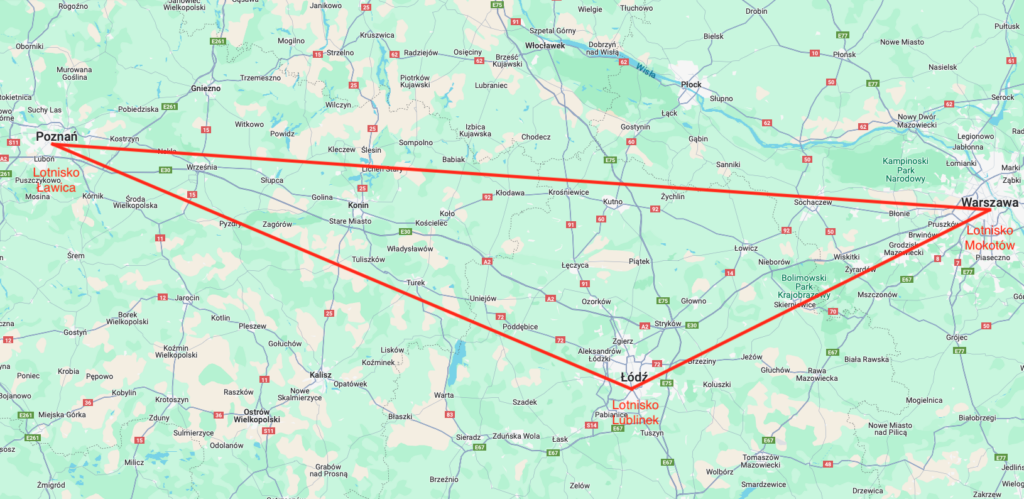
Next commercial aircraft. 1921.
In 1921, several more aircraft appeared, carrying 4-6 passengers. Among them were single-engine machines such as;
Potez IX – (30 units), which flew from Paris to London, Prague, Warsaw and Budapest.
Bleriot-SPAD 33/46/56 – (version 33 produced over 40 units), subsequent versions had a larger passenger cabin and the pilot’s cockpit moved forward.
Aero-Targ (Aerotarg). 1921.
The first entirely domestic airline in Poland was founded in Poznań in 1921. Its purpose was to serve participants and visitors flying to the 1st Poznań Fair. The organizing committee of the first Poznań Fair (later the Poznań International Fair) decided to launch an air connection between Poznań, Warsaw and Gdańsk during the event, in order to quickly transport fair participants to Poznań. For this purpose, the Aero-Targ Air Transport Association was established on 10 May 1921. In order to finance the undertaking, the organizing committee of the fair allocated 5 million Polish marks. Aero-Targ established cooperation with the Gdańsk transport company Danziger Luftpost, from which it borrowed six Junkers F 13 aircraft. The airline began operations on 28 May 1921, the opening day of the fair, and operated flights until 5 June 1921, the closing day of the fair. To mark the launch of the connection, Poczta Polska issued a commemorative stamp, a surcharge for airmail. During the fair, 58 flights were performed on the Poznań-Warsaw-Poznań route and 30 flights on the Poznań-Gdańsk-Poznań route, transporting approximately 100 passengers and 3,000 kg of shipments. However, the undertaking turned out to be unprofitable and the 5 million marks allocated for the needs of the airline did not pay off for the organizers.
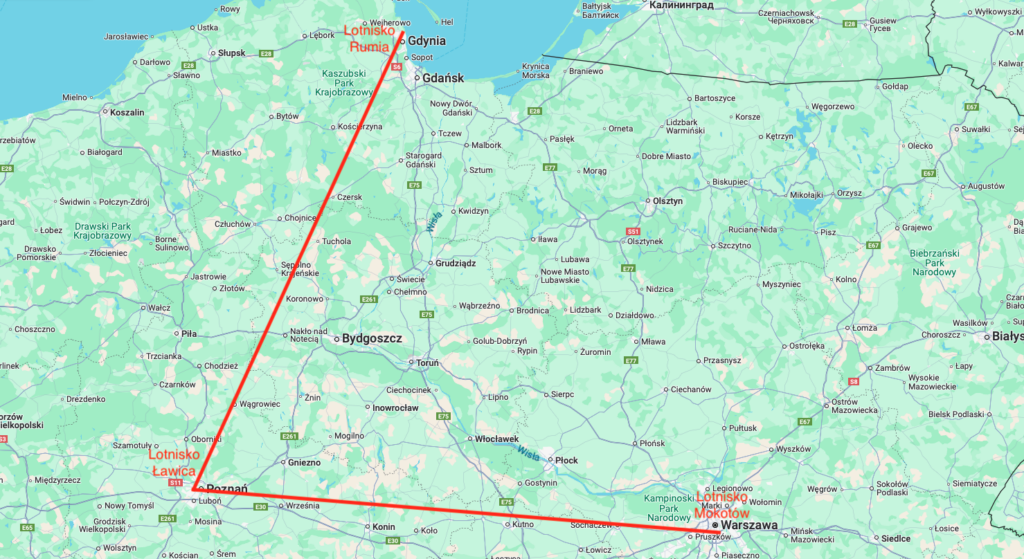
Fokker F.VII. 1924.
On February 22, 1912, the Dutchman Anton Fokker founded an aircraft manufacturer and built the first Dutch aircraft that flew well. The Fokker manufacturer has made a name for itself in the history of aviation with several good designs that appeared unexpectedly. This was due to the flashes of genius of the designer Anton Fokker, who, unencumbered by previous designs, was able to create a very good design.
In 1922, Fokker built the F.V. aircraft. It was to be a long-range aircraft. However, this aircraft was not different in concept from those being built at the time: a biplane, single-engine, passengers in a closed cabin, the pilot in an open cockpit in the front just under the wing. The machine did not arouse much interest. Especially since it did not stand out in any way, and as a design of a new company it did not inspire confidence. The next version, the Fokker F.VII, used a high-wing layout. A two-seater cockpit (two pilots) was introduced and it was completely built up. The fuselage had room for 8 passengers. Single-engine propulsion. The aircraft’s first flight was performed on April 11, 1924. This aircraft had already aroused great interest. Serial production had even been undertaken. However, after 5 aircraft had been built, the construction of the next ones was stopped. The reason was an even more modernized design, which received the designation Fokker F.VIIa. The wing received an elliptical outline, unused until then. Thanks to this, the profile chord changed with the span. A new landing gear was also built, with a wider track. The first flight was performed on March 12, 1925. The aircraft had very good flight characteristics and was easy to pilot. It also stood out for its good performance. A new powerful in-line Packard Liberty engine with 420 HP was dedicated for the aircraft. However, during the production process, such engines were installed as the future user wished. Most of the planes had Bristol Jupiter or Pratt Whitney Wasp radial engines, with 400-500 hp. 40 Fokker F.VIIa planes were built.
At the same time, in the USA, Ford announced a competition – Ford Reliability Tour, aimed at selecting the most reliable plane for the developing passenger aviation. Therefore, Fokker developed a modification of the Fokker F.VIIa plane, equipping it with two additional engines placed under the wings. At that time, it was a revolutionary system, not used in passenger planes until then. And importantly, it allowed for continuing the flight after the failure of one engine. The first flight of the three-engine Fokker, designated F.VIIa/3m, took place on September 4, 1925. The designation 3m meant 3 engines. In reality, 3 identical engines with less power were used than in the single-engine plane. The drive consisted of very successful, reliable American radial engines Wright J4 Whirlwind, with a power of 200 hp (147 kW) each.
The aircraft was built in various versions. The span and length of the aircraft were also increased, using more powerful engines. These aircraft in the passenger version took 10 people on board. By 1932, about 70 aircraft were built in the Fokker factories. A total of 154 Fokker F.VIIB/3m aircraft were built in all countries. The Fokker F.VII/3m aircraft were sent to the Dutch airline KLM. They were also used in France, Switzerland, Hungary, Denmark and, of course, in the Republic of Poland.
The Fokker F.VII/3m was first advertised in the USA and gained recognition there. Then there were various rallies and record flights. A famous event was the first close flight of a Fokker F.VIIa/3m, named Josephine Ford, by American pilots Richard Byrd and Floyd Bennett. The flight began on May 9, 1926.
Another polar explorer, Hubert Wilkins, bought two Fokker F.VII planes for his expedition; one single-engine and one three-engine. The three-engine, called Detroiter, was damaged when landing on a glacier. The single-engine plane was also damaged. The plane had a broken wing. The wrecks of the planes were transported by ship to the USA and repaired.
The great dream of the first aviators was to fly across the Pacific Ocean. There were several experienced aviators who, due to the high costs of the project, decided to combine their efforts. Hubert Wilkins offered the aviators Charles Kingsford Smith and Charles Ulm a Fokker F.VII plane, without engines. The offer was accepted. The plane was rebuilt. Additional fuel tanks with a total capacity of 1,298 gallons (about 4,900 liters) were installed in it. Three new engines were purchased. In this plane, named Southern Cross, pilots Charles Kingsford Smith and Charles Ulm flew across the Pacific for the first time between May 31, 1928 and June 9, 1928, from Oakland, USA, to Brisbane, Australia, with stopovers in Hawaii and Fiji, covering a distance of 12,000 km. The flight was very dangerous, with numerous storms. The only navigational instrument was a gyrocompass, which broke down during the last stage of the flight. Kingsford Smith later made other long flights in this plane.
On June 17, 1928, Amelia Earhart became the first woman to fly across the Atlantic Ocean from Newfoundland to Wales in a float-mounted Fokker F.VIIb/3m seaplane, named Friendship.
Some of the first Fokker F.VIIs were purchased by PanAm Airlines, which began scheduled flights from Key West, Florida, to Havana in October 1927. The U.S. Army also purchased a few F.VIIa/3ms, designated C-2. The aircraft were also assembled in the United States from delivered parts by Fokker’s subsidiary Atlantic Aircraft Corporation (1926). Despite this, the aircraft was only moderately successful commercially in the United States. However, the metal Ford Trimotor aircraft, modeled on the Fokker F.VII/3m, achieved great success.
Fokker F.VII in Poland.
Six Fokker F.VIIa/1m were purchased in 1928 by Polish private airline Aero. The first three aircraft were delivered in June 1928, and the next three in December 1928. In 1929, these aircraft were taken over by Polish Airlines LOT, established on January 1, 1929. These aircraft were used on domestic and international routes, including to Vienna and Czernowitz (via Lviv and Iwanow-Frankowski).
On July 30, 1928, a Fokker F.VII/3m aircraft with a crew of captain pilot Kazimierz Kalina, lieutenant pilot observer Kazimierz Szałas, and mechanic sergeant Stefan Kłosinka, took off on a non-stop flight from Dęblin Airport to Baghdad. The flight was successful, until the night landing, during which Kazimierz Szałas died in a crash.
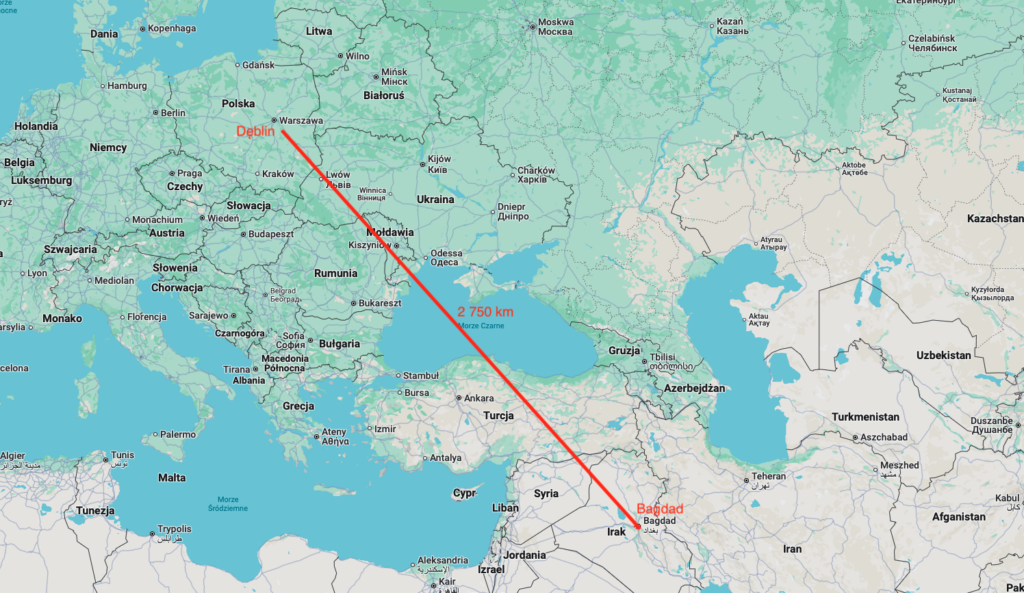
The license to produce Fokker F.VII/3m aircraft was purchased in 1928. and Poland was one of the first countries to buy the license. The production of the aircraft was commissioned to the Plage i Laśkiewicz company in Lublin. 20 aircraft were built for the military and 11 civilian aircraft. The passenger version took 10 passengers, and the transport version took 1,000-1,500 kg of cargo. These aircraft had Lorraine-Dietrich LD-12Eb inline engines with a power of 464 hp (341 kW). In 1935, the engines were replaced with Bristol Jupiter VIIF radial engines with a power of 529 HP (382 kW). In Poland, Fokker F.VII planes were used as bombers, transport planes and parachute landing planes. During the defensive war in 1939, the planes were used as transport ones. They carried weapons and ammunition.
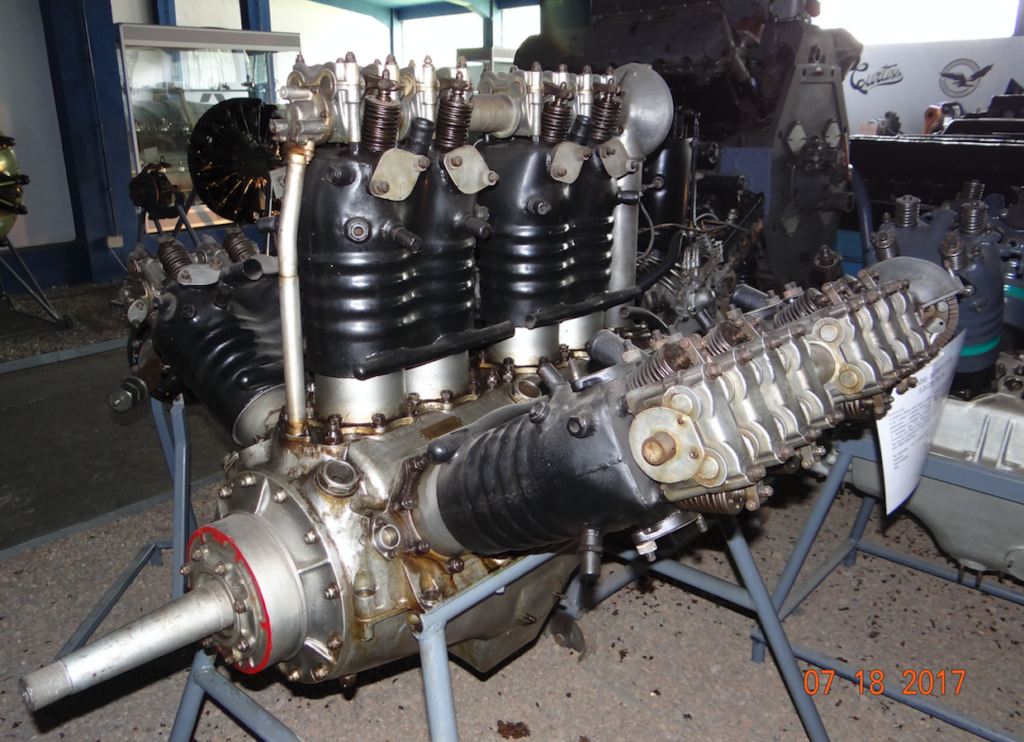
T-T Fokker F.VII data: Length 14.56 m, wingspan 21.71 m, height 3.90 m, wing area 58.5 m2, empty weight 2,600 kg, max weight 4,500 kg. Maximum speed 200 km/h, range 1,200 km.
Ford Trimotor.
The plane was built in the USA at Ford plants, based on the Fokker F.VII design. The plane received a metal fuselage and wings. Solutions and materials used in the USA were used, significantly facilitating future operation on the local market. The structure was reinforced. The plane took 10 passengers on board. The plane was very popular in the USA. It was used by many airlines. Currently (2013) there are two Ford Trimotor planes in the USA, they are flying copies.
1927 was a memorable, but also tragic year in the history of the conquest of the North America – Europe air route over the Atlantic Ocean. At least 20 attempts were made, of which only 5 were successful. Of these 5 flights; 4 belong to Americans and one to Italians, who flew from the Newfoundland Islands via the Azores to Lisbon. The ocean claimed as many as 16 victims. The most famous and still cultivated to this day was the flight of pilot Charles Lindbergh, which began on May 20, 1927, taking off from Roosevelt Field and ending with a landing at Le Bourget Airport near Paris.
However, we are more interested in the flight made the following month, June 1927, on a Fokker C-2 aircraft named America. Fokker C-2 aircraft were manufactured in the USA, in the plants of the Fokker branch for the military and airlines in the colonies. The aircraft received an additional 4,000 liter fuel tank for the flight. This flight differed from the others in its nature. The aim was to prove that commercial flights (mail and passenger) over the Atlantic Ocean were possible. The aircraft was prepared for the flight for several weeks. Additionally, during one of the test flights, the aircraft was damaged and required repairs. Finally, on June 29, 1927, the three-engine Fokker C-2 America took off from Roosevelt Field for a flight. The crew consisted of Richard R. Byrd, Bernt Balchen, Bert Acosta, Georg Noville. There were several hundred kilograms of mail on board. The plane crossed the Atlantic without any problems. However, that day fog covered the entire northern France and it was impossible to fly to Paris. The pilots turned back to the ocean shore. Unable to find a suitable landing spot, after running out of fuel, they ditched just offshore. It was already dawn on July 1, 1927. The exhausted and soaked pilots arrived in Ver sur Mer with a small bag of mail and a US flag.
Written by Karol Placha Hetman

